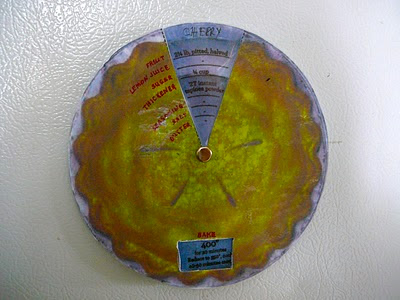 |
| Debbie is making a candle holder from emerald colored glass blobs. |
This was one of those meetings when we sort of changed from our original plans. We were supposed to do gifts in 30 minutes or less, and we did look through books Cheryl sent for ideas, but we also completed mosaic candle holders. Ella was our instructor, and she shared many different ideas for application of mosaics. She also told us about the different mediums people use including glass bits, porcelain pieces, pebbles, and glass blobs. We used glass blobs because there is less danger of getting cut than with glass pieces, although Becky was brave and tried the glass strips. To make the candle holder, you must use a clear caulk or any kind of glitter glue. This is to ensure the transparency of the holder. Glitter glue adds a little extra sparkle. There are many things you can do with mosaic such as bird baths, stepping stones, flower pots, etc. The candle holder project is fast, easy, and a good introduction to mosaics. To make a more professional piece, you can also use grout to finish it off. So go break some old plates and get started.
 |
| Candle holder using glass strips. |
 |
Candle holder using glass blobs.
|



















